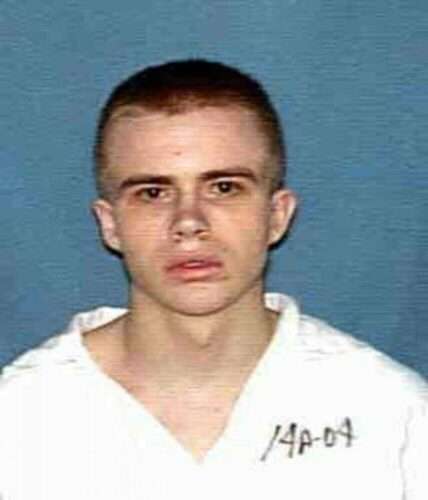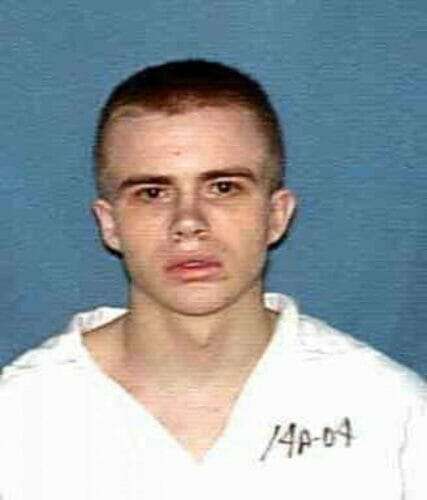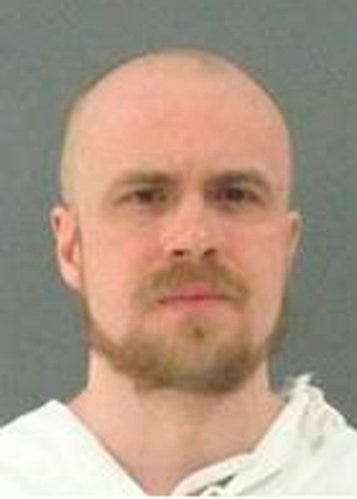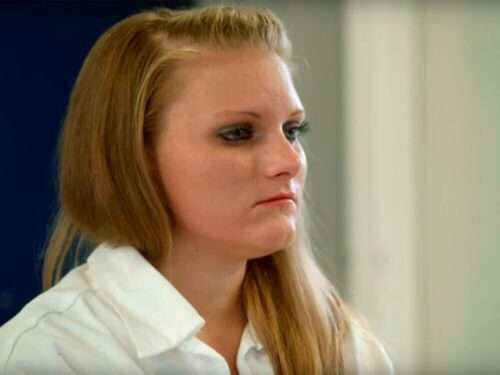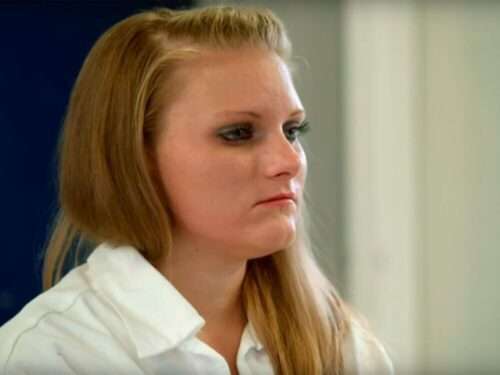
Betty Lou Beets was executed by the State of Texas for the murder of one of her husbands. Betty Lou Beets would be executed by lethal injection on February 24, 2000.
Betty Lou Beets was born in North Carolina on March 12, 1937. According to Betty Lou she was sexually abused by her father. Beets who was deaf due to a childhood bout with measles. When she was twelve years old her mother was institutionalized and she had to raise her younger siblings
Betty Lou would marry her first husband when she was fifteen years old and would last for seventeen years. Betty Lou who was no angel would rack up a series of arrests for public lewdness. Betty Lou would marry her second husband twice, the first would end after she shot him twice in the back of the head (he would survive and testify against her at the murder trial) and she was later acquitted of attempted murder charges. The same husband would remarry Beets but they would divorce again a month later.
Betty Lou Beets would marry her third husband and soon after attempted to run him over with a car. Her fourth husband would only last a year before he disappeared.
Betty Lou Beets would marry her fifth husband in 1981, two years later Jimmy Don Beets would be reported missing. Betty Lou son told the jury that she told him to leave the house and when he returned two hours later Jimmy Don Beets would be lying dead from two gunshot wounds. Betty Lou and her son would bury the body in the front yard before reporting her husband missing. Beets and her son also spilled some of her husband’s heart medication in his boat and set it adrift. Police believed that Jimmy Don Beets had drowned.
Betty Lou Beets would be arrested two years later. The police would find the body of Jimmy Don Beets buried in the front yard. Police would also find the body of her fifth husband in a well on the propert.
Betty Lou Beets would be convicted for the murder of Jimmy Don Beets and sentenced to death. She attempted to blame the murders on two of her children however the jury did not buy it.
Betty Lou Beets would be executed by the State of Texas by lethal injection on February 24, 2000.
Betty Lou Beets Videos
Betty Lou Beets More News
BETTY LOU BEETS, a 62-year-old woman convicted of the 1983 murder of her husband, was killed by lethal injection just after 6 p.m. CST at a state prison in Huntsville, Texas. The state leads the country in executions, with 208 since resuming capital punishment in 1982. Two United Nations experts on human rights had appealed to Governor Bush in a letter Thursday to spare her from execution, saying that the domestic “abuse and extreme violence” she suffered was not made known to the jury that sentenced her to die. A federal appeals court on Thursday upheld a lower court ruling rejecting her attorneys’ plea that her case be reexamined because she was a battered wife. Beets is the fourth woman executed in the United States since the 1976 Supreme Court ruling allowing capital punishment. She is the second woman and the oldest person to be put to death in Texas since the state resumed executions.
https://www.wired.com/2000/02/betty-lou-beets-62-executed/
Frequently Asked Questions
Betty Lou Beets Photos

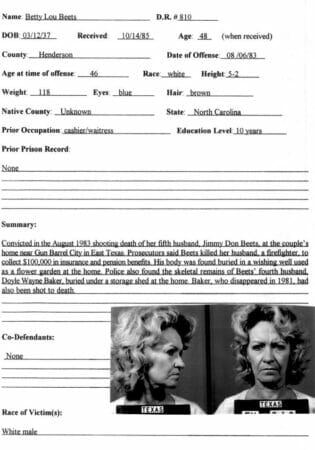
Betty Lou Beets More News
The state of Texas executed Betty Lou Beets, a 62-year-old great grandmother, Thursday evening at Huntsville prison. Beets was the second woman to be put to death in Texas in the last two years—Karla Faye Tucker was executed in February 1998—and the fourth woman to die in the US since executions resumed in 1976.
Earlier in the day Beets’ attorney Joe Margulies told CNN, “She’s very scared. She doesn’t want to be strapped down to that gurney all alone.” Beets declined a last meal and gave no final statement as she lay strapped to the death chamber gurney. After she was injected with the lethal drugs she smiled at her attorney and pastor, coughed twice and gasped before being pronounced dead at 6:18 PM Central Standard Time.
Beets was convicted in 1985 of fatally shooting her fifth husband. Police found his body buried in the front yard of the couple’s trailer home near the small East Texas town of Gun Barrel City. She was also convicted of shooting and wounding her second husband and was charged with—but never tried for—killing her fourth husband. Prosecutors dubbed her the “Black Widow of Henderson County” and claimed she killed her last husband to collect insurance money.
The case attracted national and international attention because of revelations—never presented by her original trial lawyer—that Beets had suffered physical, sexual and emotional abuse both as a child and at the hands of her husbands. Her current attorneys argued that because she had inadequate defense counsel at her 1985 trial, the jury was never able to consider mitigating circumstances during the sentencing phase.
The attorneys also charged that the state parole board violated Beets’ civil rights by denying her the review process that the state legislature mandates for all murder cases involving battered women.
About 100 protesters, some holding photographs of a bruised Beets following a beating, gathered outside the prison before the execution. Death penalty opponents, domestic violence awareness organizations, Amnesty International, Human Rights Watch and even officials from the UN Human Rights Commission had appealed to Texas Governor George W. Bush to commute the elderly woman’s sentence. According to the governor’s office, Bush received more than 2,100 calls and letters from people opposing the execution, while only 57 messages came from those endorsing it.
On Tuesday, the Texas Board of Pardons and Paroles rejected Beets’ pleas for a 180-day reprieve and commutation of her sentence. On Thursday afternoon a federal appeals court in New Orleans denied a motion to stop the execution. In Austin, US District Judge James Nowlin dismissed the motion, saying it was “yet another example of a prisoner attempting to delay execution just prior to the execution date.”
Finally, about an hour before the execution, the US Supreme Court, without comment, refused to hear Beets’ case. Minutes later Texas Governor George W. Bush gave the go-ahead for the execution by turning down an appeal for a 30-day delay. The governor issued a cursory four-sentence statement.
“After careful review of the evidence in the case I concur with the jury that Betty Lou Beets is guilty of this murder,” Bush said. “I am confident that the courts, both state and federal, have thoroughly reviewed all the issues raised by the defendant. The courts, including the US Supreme Court, have rejected all of her appeals. I concur with the recommendation of the Texas Board of Pardons and Paroles and will not grant a 30-day delay.”
Notwithstanding Bush’s claims to the contrary, Beets hardly received a fair trial and due process. Under Texas law, she could not be sentenced to death unless the state proved that she murdered her husband with premeditation, i.e., to recover a $100,000 pension and insurance policy. But her attorney, E. Ray Andrews, deliberately withheld from the jury the fact that she did not know about the insurance policy until a year-and-a-half after her husband’s murder, when Andrews himself told her about it.
This information would have seriously undermined the prosecution’s claim that Beets’ had killed for money. But to be a witness and provide testimony, he would have had to withdraw as her defense lawyer and give up his fee. His price for representing Beets was her signature on a contract surrendering all movie and book rights to her story.
“He said he was going to get rich on all this, and the case was going to be the biggest thing that ever happened to him,” Bob Miller, commander of the local Veterans of Foreign Wars post, told Beets’ appellate lawyers in a 1991 affidavit. “He said the case was going to turn into a big movie, and he had all the rights to it. It was something that he talked about pretty often.” Miller also said Andrews regularly drank heavily at the post prior to going into court to argue the case.
After becoming district attorney, Andrews was arrested by the FBI in 1994 for soliciting a $300,000 payoff to drop a death penalty case against a businessmen accused of killing his wife. He resigned from the prosecutor’s office, gave up his law license, and cried at his sentencing, saying he was a longtime alcoholic, prescription drug abuser and heavy gambler. He was sentenced to three-and-a-half years in federal prison.
Neither was the jury told that Beets had suffered years of abuse, beginning when she was a child in the 1940s. She grew up poor in a small Texas town, battling an alcoholic father and a mentally ill mother. Beets was sexually abused as early as age five and later suffered organic brain damage in a car accident. She first married at the age of 15, was beaten by many of her husbands and became an alcoholic.
In 1991, a federal court judge held that Beets’ defense attorney’s behavior violated her right to effective counsel and ordered a new trial. But the Fifth Circuit Court of Appeals reinstated her conviction and death sentence, saying Beets could not show that either Andrews’ testimony or evidence of spousal abuse would have changed the trial’s outcome.
“All my momma’s life, she’s been abused,” her daughter Faye Lane said at a news conference earlier in the week. “I’ve seen it with my own eyes. And I know that if the jury heard the truth about my momma, she only could have done something like this if she’d been very scared or threatened.”
Shortly before her execution, Beets told the Athens Daily Review, “This is not a capital case, it’s about domestic violence…You don’t kill the one that survives it.”
The execution of Betty Lou Beets is a particularly gruesome example of the brutality and vindictiveness of the death penalty. But it is by no means the exception. The vast majority of the 3,600 inmates on death row come from impoverished and abused backgrounds and lack the resources for an adequate defense. They confront prosecutors, judges and politicians who want to further their careers by promoting the death penalty and appealing to the most backward and reactionary sentiments in the population.
Since becoming governor in 1995 George W. Bush, who is running for president as a “compassionate conservative,” has overseen 121 executions, more than any other governor in US history. The state parole board, which is dominated by Bush appointees, has only granted commutations to two death row prisoners. Rejections of appeals are so commonplace, the parole board rarely meets and instead votes on clemency appeals by fax. Overall, Texas is responsible for 208 of the 616 executions carried out in the US since 1976.
Support for the practice of state murder is by no means limited to the Republican Party. Just last week, President Clinton rejected calls for a moratorium on federal executions.
Advocacy of the death penalty is considered by the media and the political establishment to be a prerequisite for anyone seeking high national office. Even as evidence of wrongful convictions of death row prisoners generates growing public concern about capital punishment, reflected even in some official circles—as evidenced by a moratorium on executions by the Republican governor of Illinois—all of the current presidential candidates of both parties reaffirm their commitment to this barbaric practice. They make a point of aligning themselves with the law-and-order elements that hold sway in both big business parties.
https://www.wsws.org/en/articles/2000/02/exec-f26.html
Betty Lou Beets FAQ
Why Was Betty Lou Beets Executed
Betty Lou Beets was executed for the murder of one of her husbands
When Was Betty Lou Beets Executed
Betty Lou Beets was executed on February 24, 2000





